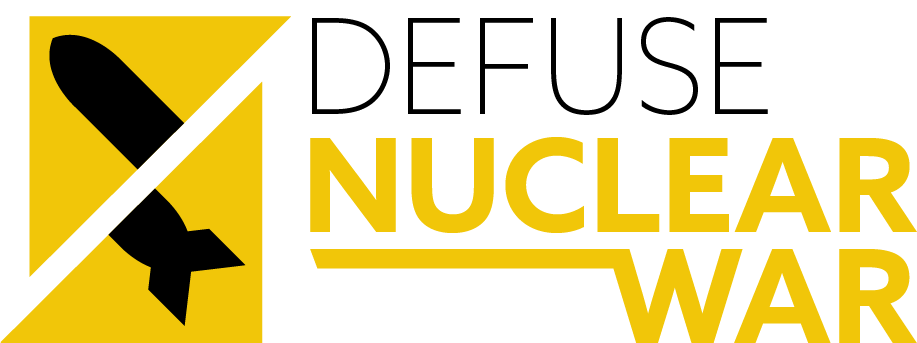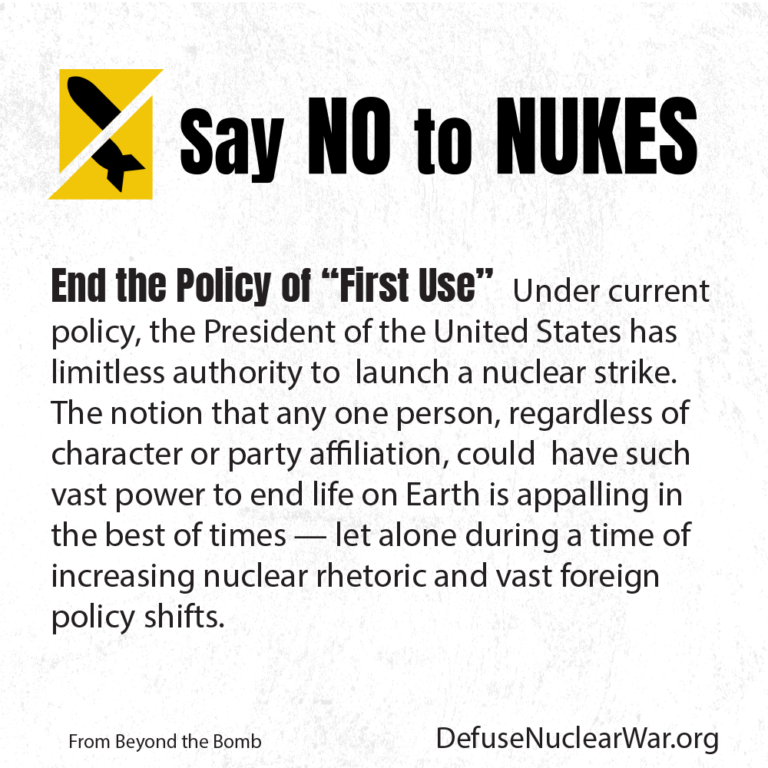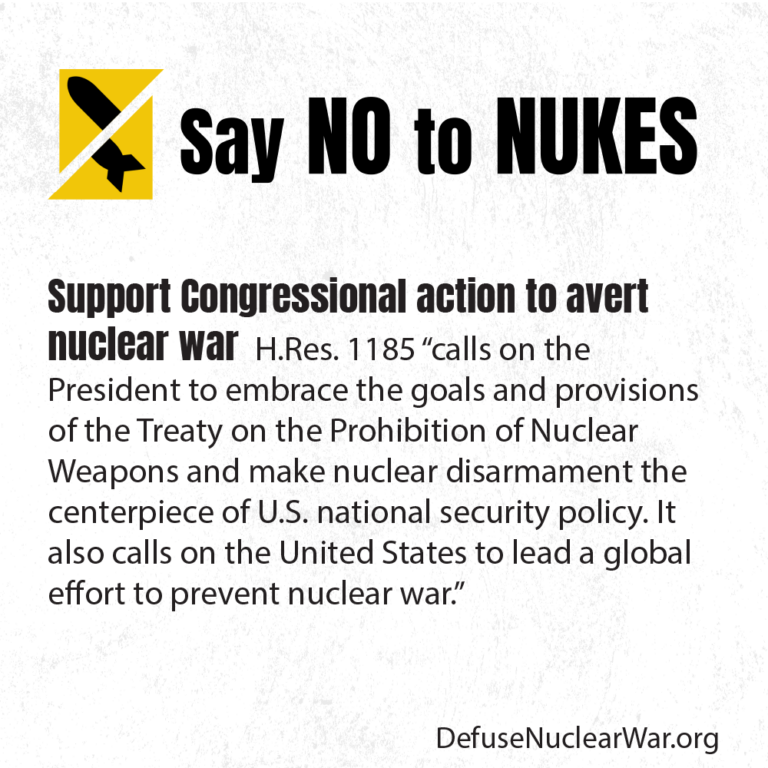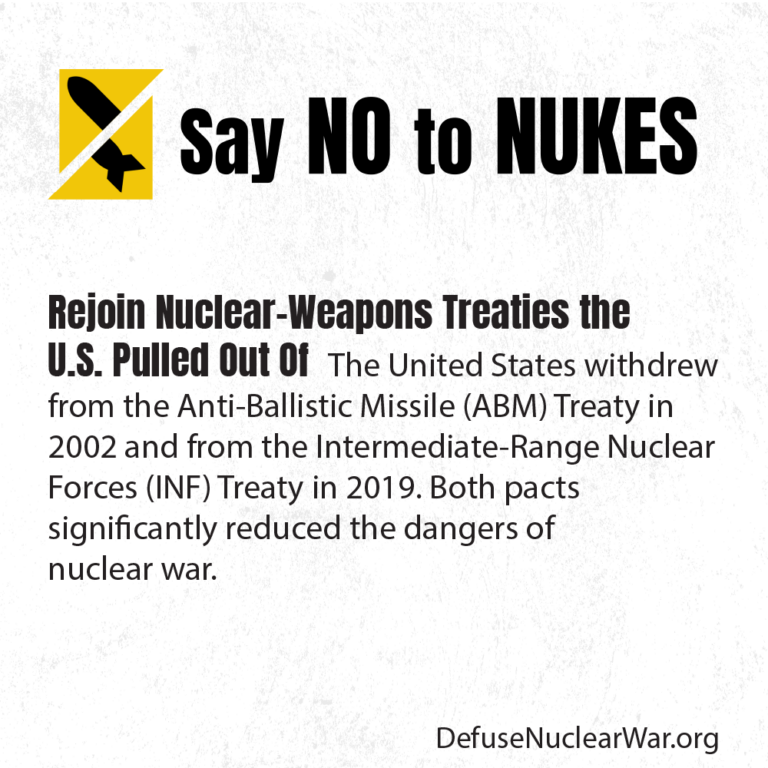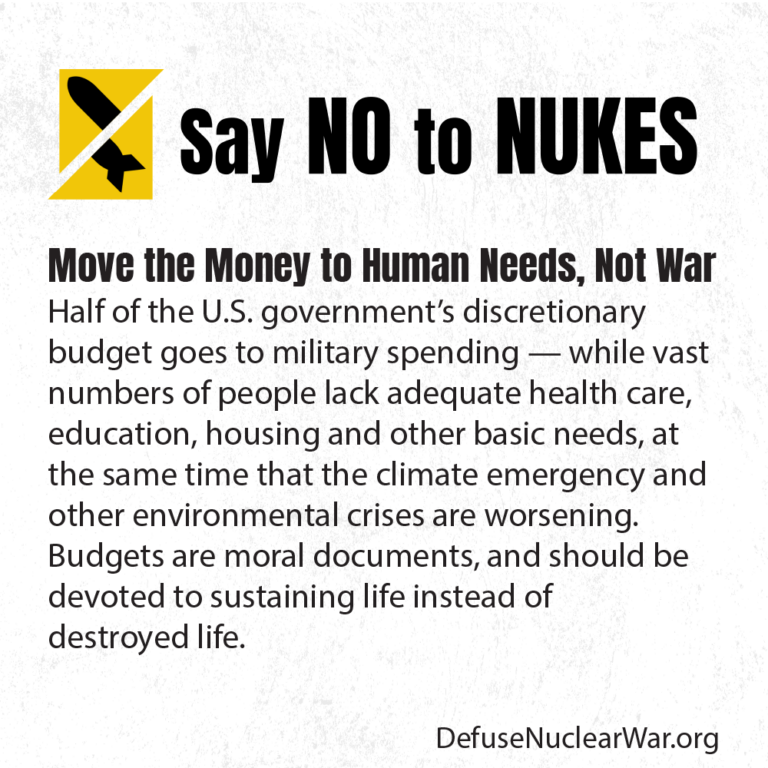How To Defuse Nuclear War
The dangers of nuclear war have risen sharply this year. Unfortunately, very few members of the House and Senate have risen to the occasion by speaking out or publicly urging measures to de-escalate tensions between nuclear powers and seriously revive negotiations for nuclear-weapons treaties and disarmament measures. Below are just some of the policies elected officials could support right now to reduce the risk of nuclear war.
Our Demands to Congress and the White House
From Beyond the Bomb: Under current policy, the President of the United States has limitless authority to launch a nuclear strike. The notion that any one person, regardless of character or party affiliation, could have such vast power to end life on Earth is appalling in the best of times — let alone during a time of increasing nuclear rhetoric and vast foreign policy shifts.
The United States withdrew from the Anti-Ballistic Missile (ABM) Treaty in 2002 and from the Intermediate-Range Nuclear Forces (INF) Treaty in 2019. Both pacts significantly reduced the dangers of nuclear war.
From Back From The Brink: The United States has roughly 1,700 deployed nuclear weapons and another several thousand in reserve. Four hundred of these are on missiles in underground silos, ready to be launched within minutes of a presidential order. This alert status — called hair-trigger alert — increases the chance of a launch in response to a false alarm.
From Beyond the Bomb: The U.S. is set to spend $264 billion dollars on the projected lifetime cost of the Ground-Based Strategic Deterrent program, which is set to replace the land-based nuclear missiles. Meanwhile, a growing consensus among nuclear weapons experts asserts not only that the U.S. doesn’t need these weapons for its security, but that keeping them keeps the U.S. needlessly vulnerable to a massive nuclear attack.
H.Res. 1185 “calls on the President to embrace the goals and provisions of the Treaty on the Prohibition of Nuclear Weapons and make nuclear disarmament the centerpiece of U.S. national security policy. It also calls on the United States to lead a global effort to prevent nuclear war.”
Half of the U.S. government’s discretionary budget goes to military spending — while vast numbers of people lack adequate health care, education, housing and other basic needs, at the same time that the climate emergency and other environmental crises are worsening. Budgets are moral documents, and should be devoted to sustaining life instead of destroyed life.
How Dangerous is the current nuclear crisis?
In the aftermath of the 1962 Cuban Missile Crisis, President John F. Kennedy said in a speech at American University that “a single nuclear weapon contains almost 10 times the explosive force delivered by all the allied air forces in the Second World War.” Kennedy noted that “the deadly poisons produced by a nuclear exchange would be carried by wind and water and soil and seed to the far corners of the globe and to generations yet unborn.” And he added: “All we have built, all we have worked for, would be destroyed in the first 24 hours.”
At the time of Kennedy’s presidency, nuclear war would have been indescribably catastrophic. Now — with large arsenals of hydrogen bombs and what scientists know about “nuclear winter” — experts have concluded that a nuclear war would virtually end agriculture and amount to omnicide.
In an interview after publication of his book The Doomsday Machine, Daniel Ellsberg summed up what he learned as a Pentagon insider during the Kennedy administration: “What I discovered — to my horror, I have to say — is that the Joint Chiefs of Staff contemplated causing with our own first strike 600 million deaths, including 100 million in our own allies. Now, that was an underestimate even then because they weren’t including fire, which they found was too incalculable in its effects. And of course, fire is the greatest casualty-producing effect of thermonuclear weapons. So the real effect would’ve been over a billion — not 600 million — about a third of the Earth’s population then at that time.”
Ellsberg added:
“What turned out to be the case 20 years later in 1983 and confirmed in the last 10 years very thoroughly by climate scientists and environmental scientists is that that high ceiling of a billion or so was wrong. Firing weapons over the cities, even if you call them military targets, would cause firestorms in those cities like the one in Tokyo in March of 1945, which would loft into the stratosphere many millions of tons of soot and black smoke from the burning cities. It wouldn’t be rained out in the stratosphere. It would go around the globe very quickly and reduce sunlight by as much as 70 percent, causing temperatures like that of the Little Ice Age, killing harvests worldwide and starving to death nearly everyone on Earth. It probably wouldn’t cause extinction. We’re so adaptable. Maybe 1 percent of our current population of 7.4 billion could survive, but 98 or 99 percent would not.”
Even before the Russian invasion of Ukraine in late February, the risks of global nuclear annihilation were at a peak. In January, the Bulletin of the Atomic Scientists set its Doomsday Clock at a mere 100 seconds from apocalyptic Midnight, compared to six minutes a decade ago. Since then, the hazards of a nuclear war between the world’s two nuclear superpowers have increased.
Grassroots activism will be essential to pressure members of Congress to publicly acknowledge the dangers of nuclear war and strongly advocate specific steps for reducing them.
Sign up for Updates
Nuclear weapons pose an existential threat to the survival of humanity. Together, we can insist on diplomacy and disarmament — not more militarism.

Help build a movement to prevent nuclear war
This work is licensed under a Creative Commons Attribution-NonCommercial 4.0 International License. Defuse Nuclear War is a joint endeavor of RootsAction.org and the RootsAction Education Fund.
